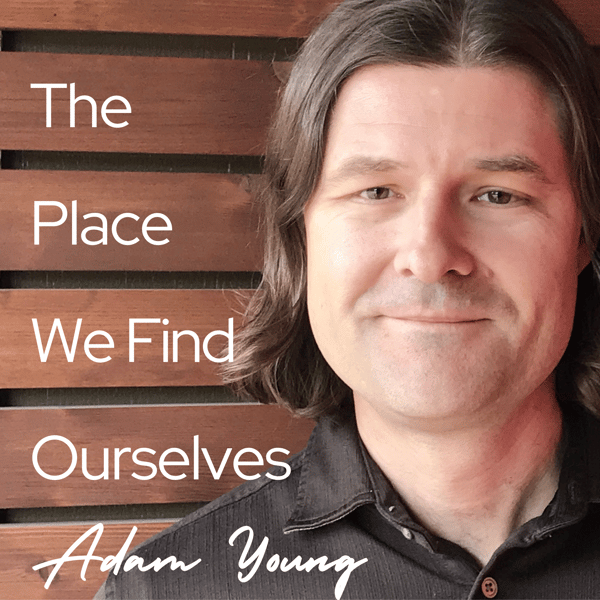20 Affect Regulation: Why It's Critical For Everyday Life
The Place We Find Ourselves
Adam Young
4.8 • 2.5K Ratings
🗓️ 20 August 2018
⏱️ 30 minutes
🧾️ Download transcript
Summary
“Affect” refers to your moment by moment experience of your internal bodily sensations. Think of affect on a scale of 1-10, where 1 represents completely numb and shut down and 10 represents panic, rage, or terror. On this scale, 5-6 represents a slight feeling of relaxed excitement—you are alert, present, and attentive. When you become dysregulated, your body’s greatest need is to return to a regulated state in that 5-6 zone. Affect regulation lies at the core of feeling like you can control your insides. Moreover, all dysfunctional ways of being in the world—all addictions and compulsions—are, at their core, attempts at affect regulation. An impaired ability to self-regulate wreaks havoc in interpersonal relationships because, when you become dysregulated, you are no longer present.
Transcript
Click on a timestamp to play from that location
| 0:00.0 | Welcome back to the place we find ourselves. I'm Adam Young and today I'm going to unpack |
| 0:06.8 | the topic of affect regulation. This is actually a far more important topic than it sounds. |
| 0:14.6 | A few things are more relevant to your day to day, really your minute to minute life than your affect and your ability to regulate your affect. |
| 0:24.4 | This is the last episode of season one. I will be taking a break for several weeks and then season two will begin on |
| 0:34.1 | October 1st. Very excited about what I have in store for season two. So today rounds out season one. |
| 0:41.1 | First of all, what is affect affect is the felt sense of what is happening in your body. |
| 0:54.8 | It refers to your inner emotional and bodily experience. It's your moment to moment experience of your internal bodily sensations and |
| 1:08.0 | and affect exists on a spectrum. So think of affect on a scale of one to ten. Where one represents completely numb and shut down and ten represents sheer panic or rage. |
| 1:23.8 | On this scale, five to six represents a slight feeling of relaxed excitement. You're alert, you're present, you're attentive. I mean, hopefully you're in the five to six range right now. |
| 1:38.0 | When you are in the five to six range, you are regulated. It's the zone of optimal arousal. When you are in the five to six place, you are not dysregulated. |
| 1:52.1 | Now, as you move down the scale and you move towards one to three, your body is in a state of hypo arousal. |
| 2:02.6 | Hypo simply means low. Your arousal is very low. Hypo arousal, the one to three range, is marked by bodily sensations such as a sense of numbness or being shut down. |
| 2:17.5 | Your breathing is shallow. You may have difficulty concentrating. You feel checked out. |
| 2:24.8 | This range, one to three also correlates with emotions such as shame, hopelessness and or despair. When you are in the one to three zone, when you are feeling yourself numbing out or shutting down, you will often be experiencing some measure of shame, hopelessness or |
| 2:47.0 | despair. Now, as you move up from five to six and you move towards the eight to ten range, your body is in a state of hyper arousal. In hyper arousal, you will experience bodily sensations such as a racing heart, faster breathing, a tightening in your chest or stomach, a sense of jitteryness. |
| 3:10.8 | It's this it's a sense of being amped up inside and you will also feel emotions such as panic, terror and or rage. |
| 3:21.8 | So five to six is optimal arousal. Your present alert, give a slight feeling of excitement. Whenever you are out of the four to seven range, your body is in a state of dysregulation. |
| 3:37.9 | The eight to ten panic rage zone is dysregulation and the one to three shutdown numbed out zone is also dysregulation. People in hyperearoused states, hypere, one to three, they may not appear to be dysregulated. They often look calm and sometimes they may even look present, but they are just as dysregulated as someone in a panicked state of hyper arousal. |
| 4:07.9 | It just looks different on the outside. So affect or arousal exists on a continuum. It ranges from numbing shutdown one to three through relaxed attentiveness and being present five to six and on to panicked and frenzied eight to ten. |
| 4:31.8 | And by the way, if you want a document that summarizes this information, just go to my website and you can get it under free resources. It is the one titled affect regulation. |
| 4:44.3 | Okay, so that's affect. Now what is what's the regulation part? What is affect regulation? Everyone gets dysregulated. |
| 4:53.6 | Everyone. However, some people get dysregulated more frequently than others. And some people get dysregulated by more subtle stimuli. |
... |
Please login to see the full transcript.
Disclaimer: The podcast and artwork embedded on this page are from Adam Young, and are the property of its owner and not affiliated with or endorsed by Tapesearch.
Generated transcripts are the property of Adam Young and are distributed freely under the Fair Use doctrine. Transcripts generated by Tapesearch are not guaranteed to be accurate.
Copyright © Tapesearch 2025.

